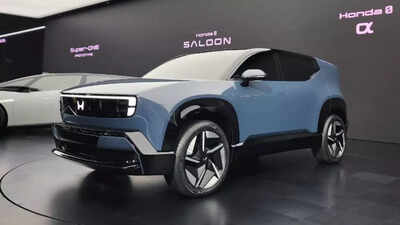ARTICLE AD BOX

Honda recently announced its future roadmap with plans to launch 10 new models in India. The carmaker set up shop in India in December 1995 and started local manufacturing soon after.
The company launched the City sedan here in 1998. It was sort of a gamble to debut with a mid-size sedan in a market that was flooded with small cars at that time but this move paid off and the model quickly became the face of Honda in India.The City’s success was no accident. At a time when the market was crowded with hatchbacks, the City offered a roomy cabin, refined engines and a premium-feeling interior. Over two decades the City became a steady seller and a crowd favorite: by 2022 Honda reported the City had crossed several cumulative sales milestones in India including domestic dispatches of over 9 lakh units since its debut.Building on that momentum, Honda expanded its range in India with models that carried a more premium image: the Accord, Civic and CR-V at the higher end. The company launched the Amaze (its first India-market diesel) in 2013, the Mobilio MPV in 2014, the BR-V crossover in 2016 and the WR-V in 2017 as part of a push to win more buyers. Some of those models did well early on, but Honda struggled over time to keep pace with rivals that moved faster into hot segments such as compact SUVs.
New Honda Amaze Review: 1 Big feature more than Maruti Dzire, 1 Less! | TOI Auto
Structural changes followed. In December 2020 Honda stopped production at its 1997 Greater Noida unit. That period prompted talk about whether Honda would scale back its India ambitions.But the story is turning again. Honda has now signalled a comeback: a dedicated India plan that promises 10 new models by 2030 (seven of them SUVs) and a stronger mix of petrol, hybrid and electric vehicles. The road map includes both India-developed, locally produced cars and some imported models; centrally among the new push is the Honda “0” series, with the 0 Alpha prototype unveiled at the Japan Mobility Show and slated for India as an accessible EV.

Honda India’s lineup includes the Elevate, Amaze, and the City along with a hybrid version.
Behind the headlines are hard numbers that show why India matters again for Honda. In FY 2024–25 the company reported total sales of 1,26,151 units (domestic and exports combined), and in September 2025 completed 2,00,000 cumulative exports from India. Still, Honda’s market share in India has shrunk in recent years as rivals broadened model lineups faster, leaving the brand with a smaller range than many competitors.
Why it's a new mindset
What’s different this time is the scale and the intent. Honda is not only promising EVs such as the 0 Alpha but also a choice of petrol and hybrid launches, and a local play that aims to keep price-sensitive buyers in its fold. Vehicles developed for India will be made in India and we'll also get some premium vehicles that will be imported. This shows that the company is no longer holding back or trying to play it safe to survive a short duration.
Instead, it's going in full attack mode to offer a Honda product to customers across powertrain and budget choices.

Honda 0 Alpha e-SUV.
The new EV design might not immediately appeal to everyone but it looks better in flesh than on paper and gives the 0 Alpha a distinct identity without looking polarising. Of course, this is just the start and a lot needs to be done by Honda but they surely seem to have got the strategy right this time. For any volume-seller, surviving with a few models is inviting doom so while Honda needs to get many things right, we know one thing for sure that it's going to be in India for long and it no longer intends to merely survive but grow. For Honda enthusiasts and for the Indian automotive market, this is quite simply a big positive outcome.

 1 hour ago
5
1 hour ago
5









 English (US) ·
English (US) ·